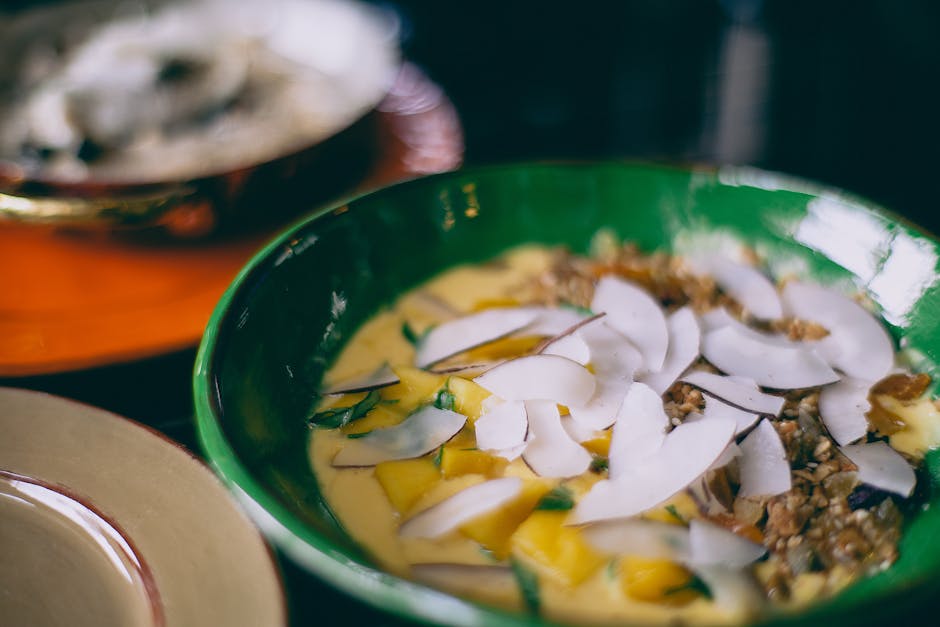Indulge in the rich, velvety embrace of Vietnam’s most iconic beverage: the best Vietnamese egg coffee. This isn’t your average cup of joe; it’s a culinary experience steeped in history and cultural significance, a testament to ingenuity and a delightful fusion of flavors. Unlike traditional coffee brewing methods, Vietnamese egg coffee boasts a unique preparation, resulting in a creamy, decadent texture that’s both surprising and utterly captivating. Its origins trace back to the mid-20th century in Hanoi, a testament to the resourcefulness of the era.
The story begins in the 1940s at Giang Café in Hanoi’s Old Quarter. Legend has it that a resourceful barista, facing a shortage of milk, creatively experimented with egg yolks, condensed milk, and strong Vietnamese coffee to create a richer, more satisfying beverage. This ingenious concoction, initially a response to wartime limitations, quickly gained popularity, transforming from a simple alternative to a beloved national treasure. The secret recipe, passed down through generations within the Giang family, remains largely unchanged, though variations have since emerged across the country. This initial innovation showcases the spirit of Vietnamese adaptability and creativity in the face of hardship.
Vietnamese egg coffee’s cultural significance extends beyond its unique taste. It’s more than just a drink; it represents a pivotal moment in the nation’s culinary history. The beverage is deeply intertwined with Hanoi’s identity, becoming a symbol of the city’s resilience and its ability to transform challenges into opportunities. Today, it’s a staple at countless cafes across Vietnam, drawing both locals and tourists alike. In fact, tourism statistics show a significant increase in visitor numbers specifically seeking out this unique coffee experience, highlighting its international recognition and appeal. The distinct preparation, the meticulous layering of the yolk mixture atop the hot coffee, and the rich, subtly sweet flavor profile have all contributed to its global rise in popularity.
Beyond Giang Café, numerous cafes now offer their own interpretations of this classic beverage, each with slight variations in sweetness and texture. While the original recipe remains a closely guarded secret, the widespread adoption of egg coffee has led to a flourishing of creative adaptations, showcasing the ongoing evolution of this beloved drink. Whether you prefer it intensely rich and decadent or slightly lighter and sweeter, experiencing a cup of Vietnamese egg coffee is a journey into Vietnam’s vibrant culinary heritage, a taste of history, and a testament to the power of innovation in the face of adversity.
Ingredients and Measurements
Crafting the perfect Vietnamese Egg Coffee requires careful attention to ingredient quality and precise measurements. Using fresh, high-quality ingredients will significantly impact the final flavor profile, resulting in a richer, smoother, and more delightful experience. Below, we detail the ingredients and their precise measurements for a single serving. You can easily scale this recipe up or down depending on your needs.
Coffee: We recommend using a strong, dark roast Vietnamese coffee, preferably Robusta beans. This type of coffee bean boasts a bold, intense flavor that complements the richness of the egg yolk mixture perfectly. Use 2 tablespoons (approximately 10 grams) of freshly ground coffee beans. Avoid pre-ground coffee as it tends to lose its freshness and aroma more quickly. If you’re using a different type of coffee, you might need to adjust the amount slightly based on its strength. A coarser grind is generally preferred for the phin filter to prevent clogging.
Eggs: The egg yolk is the star of this drink, contributing its creamy texture and rich flavor. Use one large egg yolk. Ensure the egg is fresh and at room temperature for optimal emulsification. Room temperature yolks blend more easily with the condensed milk and sugar, creating a smoother, silkier texture. Using a cold egg yolk can result in a less homogenous mixture with visible oil separation.
Sweetened Condensed Milk: This ingredient provides the necessary sweetness and contributes to the creamy texture. We recommend using 1-1.5 tablespoons (approximately 15-22 grams) of sweetened condensed milk. Adjust the amount to your preference. Some prefer a sweeter coffee, while others prefer a slightly less sweet version. Start with the lower amount and add more to taste if needed. The quality of the condensed milk can also affect the overall taste, so choose a reputable brand.
Sugar: A small amount of granulated sugar helps to balance the bitterness of the coffee and enhance the sweetness. Use 1 teaspoon (approximately 4 grams) of granulated white sugar. Again, adjust this to your preferred level of sweetness. You can use a different type of sugar, like brown sugar, but the taste will slightly differ.
Hot Water: The hot water is used to brew the coffee using a traditional phin filter. Use approximately 4 ounces (approximately 120 ml) of freshly boiled water. The water temperature is crucial; avoid using boiling water directly from the kettle, as this can scald the coffee grounds and result in a bitter brew. Let the water cool slightly before pouring it over the grounds.
Optional additions: While these are the core ingredients, some variations exist. A pinch of vanilla extract can enhance the overall flavor profile, adding a subtle sweetness and aroma. Additionally, a sprinkle of cinnamon or cocoa powder on top can provide a beautiful visual presentation and an extra layer of flavor.
Important Note: Accurate measurements are crucial for achieving the perfect balance of flavors and texture. Using a kitchen scale for weighing the coffee and condensed milk will ensure consistency in your results. Enjoy your delicious Vietnamese Egg Coffee!
Equipment List: Crafting the Perfect Vietnamese Egg Coffee
Creating authentic and delicious Vietnamese egg coffee requires the right tools. While some items are essential, others enhance the experience and contribute to a more consistent and professional result. This list details the necessary equipment, including alternatives where applicable, to help you brew the perfect cup.
1. Phin Filter: This is the cornerstone of Vietnamese coffee brewing. A traditional phin is a small, cylindrical metal filter with a perforated disc at the bottom. Size matters; a standard phin holds approximately 40-50 grams of ground coffee, suitable for a single or double serving. Look for a high-quality phin made of durable stainless steel or aluminum to avoid rust and ensure even brewing. Avoid cheap plastic phins as they may affect the taste.
2. Coffee Grinder: Freshly ground coffee is paramount for optimal flavor. A burr grinder is strongly recommended over a blade grinder, as it produces a more consistent grind size, crucial for proper extraction in a phin. A medium-fine grind is ideal for Vietnamese egg coffee; too coarse, and the coffee will be weak; too fine, and it will be bitter and over-extracted. Experiment to find the perfect grind for your specific beans and phin.
3. Vietnamese Robusta Coffee Beans: Robusta beans are traditionally used due to their strong, bold flavor that complements the sweetness of the egg yolk. Aim for high-quality, freshly roasted beans. Approximately 40-50 grams are needed for a single serving, depending on the size of your phin. Store unused beans in an airtight container in a cool, dark place to maintain freshness.
4. Egg Yolk(s): The richness of the egg yolk is fundamental to the creamy texture of the coffee. Use large, fresh eggs, preferably free-range. One large egg yolk is sufficient for a single serving, though you can adjust to your preference. Ensure the eggs are at room temperature for easier emulsification.
5. Sweetened Condensed Milk: This provides the sweetness and balances the bitterness of the coffee. Use high-quality sweetened condensed milk; the brand can significantly affect the final taste. Start with 1-2 tablespoons per serving and adjust according to your taste preference. Experiment with different brands to find your favorite.
6. Mixing Bowl and Whisk: A small mixing bowl (approximately 10-12 cm diameter) is needed for whipping the egg yolk and condensed milk. A small whisk (preferably balloon whisk) ensures thorough mixing and creates a smooth, creamy texture. Thorough mixing is crucial to prevent the egg yolk from separating in the coffee.
7. Measuring Spoons and Cups: Precise measurements are key for consistency. Accurate measuring spoons and cups will help you maintain the desired ratio of coffee, condensed milk, and egg yolk.
8. Small Kettle or Gooseneck Kettle: A small kettle allows for precise control of water temperature. A gooseneck kettle offers superior control for pouring hot water slowly and evenly over the coffee grounds in the phin, ensuring even extraction. Water temperature should be around 200°F (93°C).
9. Serving Glasses: Use small, clear glasses (approximately 6-8 oz) to showcase the beautiful layered effect of the egg coffee. Pre-warming the glasses helps maintain the coffee’s temperature.
Preparation of Egg Yolk Mixture
The heart of a truly exceptional Vietnamese Egg Coffee lies in the flawlessly prepared egg yolk mixture. This creamy, rich base provides the signature sweetness and velvety texture that elevates this beverage above the ordinary. Mastering this step is crucial for achieving the perfect balance of flavors and consistency.
Begin by gathering your ingredients: two large egg yolks, two tablespoons of sweetened condensed milk, and one tablespoon of hot water. The quality of your ingredients significantly impacts the final product. Use fresh, high-quality eggs for the best flavor and richness. Opt for a good quality sweetened condensed milk; the brand you choose will subtly affect the sweetness and overall taste.
In a small, preferably stainless steel, bowl, place the two egg yolks. Stainless steel is recommended as it helps prevent discoloration and unwanted reactions. Using a whisk, vigorously whisk the egg yolks until they are light, frothy, and noticeably pale in color. This process incorporates air, creating a lighter, airier texture in the final coffee. Don’t rush this step; aim for at least 2-3 minutes of consistent whisking to achieve optimal volume and prevent a grainy texture.
Gradually add the sweetened condensed milk to the whisked egg yolks. Continue whisking constantly to ensure the milk is fully incorporated and no lumps form. Adding the condensed milk slowly prevents the mixture from becoming too thick or separating. The resulting mixture should be smooth, glossy, and a pale, creamy yellow.
Finally, slowly incorporate the tablespoon of hot water into the egg yolk and condensed milk mixture. The hot water helps to slightly temper the raw egg yolks and further smooth the consistency, preventing any lingering graininess. Whisk gently but thoroughly until the mixture is completely homogenous and has a slightly thinner consistency than it had before the addition of the water. This ensures it blends seamlessly with the hot coffee.
Once the mixture is ready, you may notice a slight sheen or glossiness to it. This is a good indicator that it’s properly emulsified and ready for use. Avoid over-whisking, as this can create excess air bubbles and lead to a less desirable texture in your final coffee. If you find the mixture is too thick, add a tiny amount more hot water, a half teaspoon at a time, whisking gently after each addition until the desired consistency is reached.
Proper preparation of the egg yolk mixture is paramount to achieving the signature creamy texture and rich flavor of Vietnamese Egg Coffee. Take your time, pay attention to detail, and enjoy the process of creating this delightful beverage.
Brewing the Coffee
Brewing the perfect Vietnamese egg coffee requires precision and attention to detail. While seemingly simple, mastering the technique elevates this classic beverage from good to extraordinary. We’ll guide you through each step, ensuring you achieve a rich, creamy, and subtly sweet cup every time.
Start with high-quality ingredients. This is paramount. Use freshly roasted, finely ground Vietnamese Robusta beans – their bold flavor profile is essential. Pre-ground coffee can become stale quickly, impacting the final taste. We recommend approximately 2 tablespoons of ground coffee per 6 ounces (177ml) of water. Adjust to your preference, but remember, finer grinds will yield a stronger brew.
The brewing method is crucial. Traditionally, a phin filter is used. This small, individual Vietnamese coffee filter allows for a slow, controlled drip brew, maximizing the coffee’s flavor extraction. If you don’t have a phin, a very fine mesh filter can be used, but the results may vary slightly. Place the ground coffee into the phin, ensuring it’s evenly distributed. Don’t over-pack the grounds; a gentle press is sufficient.
Pre-wet the coffee grounds. This step, often overlooked, is key to a balanced brew. Slowly pour a small amount of nearly boiling water (around 185-200°F or 85-93°C) over the grounds, just enough to saturate them. Allow this to bloom for about 30 seconds. This process releases trapped CO2, allowing for even extraction during the full brewing process.
Slowly pour the remaining water. Once the bloom is complete, gradually pour the remaining water over the coffee grounds. Avoid pouring too quickly, as this can lead to over-extraction and bitterness. The total amount of water should be approximately 6 ounces (177ml) for the recommended coffee quantity. Let the coffee drip slowly, which should take approximately 4-5 minutes. The slower the drip, the richer and smoother the coffee will be. Patience is key here.
Addressing common issues: If your coffee is too bitter, you may have over-extracted it. Try using a coarser grind or reducing the brewing time. If it’s too weak, a finer grind or slightly longer brewing time might be necessary. Experimentation will help you find the perfect balance for your taste and equipment.
Maintaining temperature is important. Keep your coffee warm while preparing the egg yolk mixture to ensure the crema blends seamlessly. A pre-warmed mug or a small thermos can help maintain the ideal temperature.
Remember to clean your phin thoroughly after each use. Coffee oils can build up quickly, affecting the flavor of subsequent brews. A quick rinse with hot water and a gentle scrubbing is usually sufficient. For stubborn residue, a mild detergent can be used, followed by a thorough rinsing.
By following these steps meticulously, you’ll be well on your way to crafting the best Vietnamese egg coffee you’ve ever tasted. Enjoy the process and the incredible reward of a perfectly brewed cup!
Combining Coffee and Egg Yolk Mixture
This section details the crucial step of combining the freshly brewed coffee with the prepared egg yolk mixture. The success of your Vietnamese egg coffee hinges on this delicate process, ensuring a smooth, creamy, and rich final product. Improper execution can lead to a grainy texture or a separation of the coffee and egg yolk.
Start with your freshly brewed, hot coffee. We recommend using a strong, dark roast coffee for the best flavor profile. The ideal amount is approximately 6 ounces (177 ml) for a single serving. Ensure your coffee is hot, but not boiling, as this can scramble the eggs. A temperature around 175-185°F (80-85°C) is ideal.
Prepare your egg yolk mixture. As outlined in the previous section, you should have a smooth, homogenous mixture of 1 large egg yolk, 1-2 tablespoons of condensed milk (adjust to your sweetness preference), and a pinch of salt. The salt enhances the sweetness and balances the richness of the egg yolk and condensed milk.
The combining technique is key. There are two primary methods: slow pouring and vigorous whisking. Both achieve a creamy texture, but the results differ slightly. For a smoother, less frothy result, slowly pour the hot coffee into the egg yolk mixture, whisking constantly with a small whisk or a fork. This method allows for gradual temperature increase, preventing the egg yolk from curdling.
The slow pouring method: Pour the coffee in a thin stream, constantly whisking the egg yolk mixture to incorporate the hot coffee smoothly. This should take around 30-60 seconds, depending on your whisking speed and the volume of coffee. Avoid pouring the coffee too quickly, as this will lead to a lumpy texture. The mixture should gradually thicken and become a light, creamy foam.
The vigorous whisking method: This method involves pouring the hot coffee into a separate bowl and then adding the egg yolk mixture. Immediately begin whisking vigorously, creating a significant amount of foam. This method produces a more aerated and frothy coffee. Be careful not to over-whisk, or you risk incorporating too much air and creating a less cohesive texture.
Regardless of the method you choose, taste and adjust. Once the coffee and egg yolk mixture are combined, taste the mixture. You can add more condensed milk for increased sweetness or a touch more salt for a more balanced flavor. Remember, personal preference is paramount. Experiment to find your perfect balance.
Finally, pour your creation into your serving glass. The rich, creamy mixture should be smooth and have a beautiful, almost caramel-like color. Garnish with a sprinkle of cinnamon or cocoa powder, if desired, and enjoy your perfectly crafted Vietnamese egg coffee!
Serving the Vietnamese Egg Coffee
Serving Vietnamese Egg Coffee is as much an art as its preparation. The delicate balance of flavors and textures requires careful attention to detail to ensure a truly memorable experience for your guests. Getting the temperature right and presenting it beautifully are crucial elements.
Temperature is Key: The ideal serving temperature for Vietnamese Egg Coffee sits somewhere between lukewarm and slightly warm. Serving it too hot will cook the egg yolks further, resulting in a grainy, unpleasant texture. Serving it too cold will diminish the richness and creaminess. Aim for a temperature around 140-160°F (60-71°C). You can achieve this by letting the coffee cool slightly after preparation.
Presentation Matters: The visual appeal of Vietnamese Egg Coffee is just as important as its taste. Use a pre-warmed small, sturdy glass or demitasse cup. This helps maintain the coffee’s temperature and prevents a sudden temperature shock that could cause the egg foam to separate or collapse. Avoid using thin or delicate glassware, as they are more prone to breakage, especially with the added weight of the coffee and the thick egg foam.
Layering for Perfection: The traditional serving method involves creating distinct layers. First, pour approximately 2 – 2.5 ounces (60-75ml) of your freshly brewed, strongly brewed Vietnamese coffee into the pre-warmed glass. This amount depends slightly on the size of your glass. Ensure the coffee is not too hot.
Next, gently spoon the prepared egg yolk mixture on top of the coffee. Use a spoon with a rounded edge to help create a smooth, even layer. Avoid stirring at this stage. The beauty of Vietnamese Egg Coffee lies in the gradual blending of the rich coffee and the creamy egg foam as the guest enjoys their drink. A light dusting of cocoa powder or a sprinkle of cinnamon can add a touch of elegance and enhance the aroma.
Tools and Equipment: Having the right equipment makes serving a breeze. A small, sturdy pitcher (or even a heat-resistant measuring cup) is helpful for pouring the egg mixture smoothly. A good quality spoon is essential for both transferring the mixture and creating a beautiful presentation. A small, fine-mesh sieve can be used to remove any stray egg bits that might have not blended properly. Having these tools readily available will ensure a smooth and efficient serving process.
Serving Suggestions: Vietnamese Egg Coffee is best enjoyed slowly and deliberately. It is often served with a small plate of water for rinsing the palate between sips. Consider offering small pastries or biscuits alongside the coffee to complement the rich and decadent flavor. Remember to explain the unique character of the drink to your guests, highlighting the delicate balance of flavors and the traditional method of preparation.
Troubleshooting: If the egg foam separates excessively, it’s likely due to the coffee being too hot or the egg mixture not being properly emulsified. If the foam is too thin, more whipping might be needed during preparation. Practice makes perfect; don’t be discouraged if your first few attempts aren’t picture-perfect. With a little practice, you’ll be serving stunning and delicious Vietnamese Egg Coffee in no time.
Best Vietnamese Egg Coffee: Recommendations
Our Best Vietnamese Egg Coffee is a delightful blend of rich, robust coffee and a creamy, subtly sweet egg yolk mixture. To fully appreciate its unique flavor profile, we recommend following these guidelines for optimal enjoyment and storage.
Serving Suggestions: For the most authentic experience, serve your Best Vietnamese Egg Coffee hot, in a pre-warmed glass. The warmth enhances the coffee’s aroma and keeps the creamy egg mixture from cooling too quickly. Avoid using ice, as it can dilute the flavor and create an undesirable texture. If you prefer a slightly cooler beverage, allow the coffee to cool naturally for a few minutes before consuming. A small sprinkle of cinnamon or a dusting of cocoa powder can add a pleasant complexity to the drink. Stir gently before each sip to redistribute the lovely egg foam.
Storage Conditions: For the freshest taste, consume your Best Vietnamese Egg Coffee immediately after preparation. However, if you have leftover brewed coffee (without the egg mixture), it can be stored in an airtight container in the refrigerator for up to 2 days. Do not refrigerate the prepared egg coffee with the egg mixture. The egg mixture may separate or curdle upon cooling. The egg mixture itself should not be stored; it’s best made fresh before each serving.
Complementary Dishes: The rich, slightly sweet flavor of our Best Vietnamese Egg Coffee pairs beautifully with a variety of sweet and savory dishes. For a delightful breakfast or brunch, consider enjoying it alongside flaky pastries like croissants or pain au chocolat. The coffee’s creamy texture complements the buttery, crisp textures of these pastries. Alternatively, it can be paired with lighter options such as fresh fruit, yogurt, or even a simple breakfast sandwich. For a more substantial pairing, consider pairing it with Vietnamese banh mi, the savory flavors of which provide a nice contrast to the sweetness of the coffee. For a truly decadent experience, try it with a small piece of Vietnamese-style flan or a light dessert.
Nutritional Information (per serving, approximate): The exact nutritional content will vary depending on the coffee beans and the amount of egg yolk and condensed milk used. However, a typical serving will contain approximately 150-200 calories. It will be a source of fat (primarily from the egg yolk and condensed milk), carbohydrates (from the condensed milk and sugar, if added), and a small amount of protein from the egg yolk. Please note: This is an estimate and does not reflect the nutritional content of all variations of the recipe. For precise nutritional information, consult a nutritionist or use a nutrition calculator with your specific recipe ingredients and quantities.
Important Note: While generally safe for consumption, individuals with egg allergies should avoid this beverage. Also, be mindful of your sugar intake, as condensed milk is a significant source of added sugar. Enjoy responsibly!





